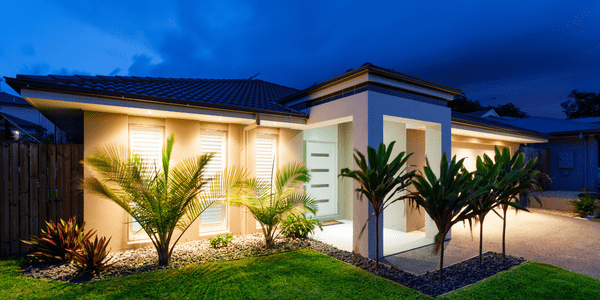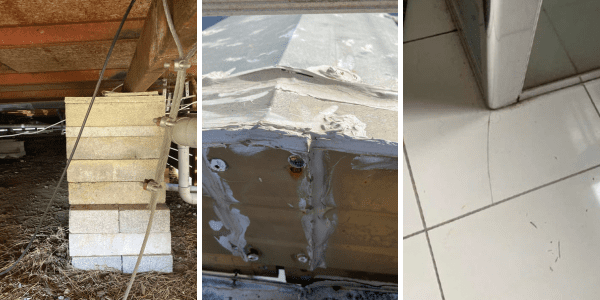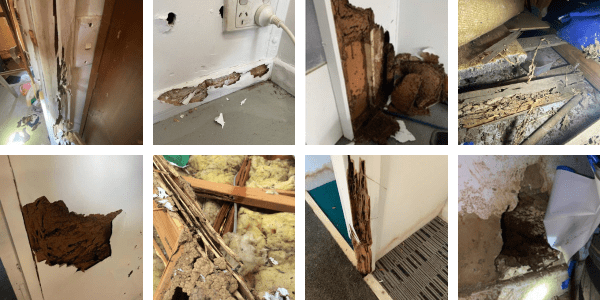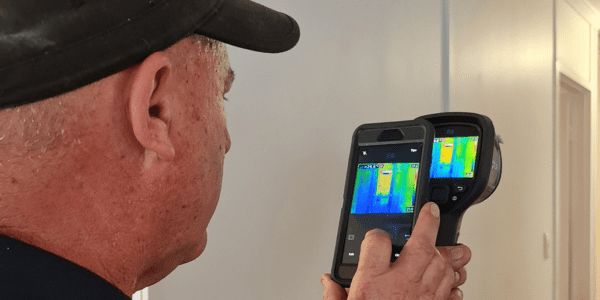A Pre-Purchase Building Inspection Protects The Buyer
Buying a home is a big investment. You want to get it right.
A building and pest inspection
The risks involved
The average home in Queensland costs hundreds of thousands of dollars, at a minimum.
Australian Consumer Law says that you have the right to ask for a refund, replacement or repair for any good or service that is less than $40,000 and bought for personal use.
However, most properties in Australia cost much more than $40,000.
As such, if you buy a home that is defective, you are unfortunately stuck with it.
This can cost thousands of dollars in repair, put your health and safety at risk and ruin your dream home.
This is the idea of “buyer beware”.
Do not rely on vendors or real estate agents
Vendors and real estate agents both want to sell you a home for the best possible price.
The vendor is the one selling the home to you, so they want to make good money on the sale.
Similarly, a real estate agent receives a commission on the sale of a home for their involvement in the sale. This means they get paid a percentage of the price of the sale.
Both vendors and agents will do all they can to extenuate the good aspects of a house and minimise or hide all the negatives.
They can go so far as to have basic patch-up construction work done to hide major issues from you.
Not everyone you met will be honest, so it is important for you to get your own verification.
The importance of a pre-purchase building inspection
Getting a building inspection should be an absolute necessity.
This is because that there might be faults as a result of dodgy construction work.
Dodgy construction work can occur in new houses or in sections of a home that have been renovated.
This dodgy work manifests can become either a major and minor issue.
Minor defects are not immediately an issue and may just be something to keep an eye on. They may not pose a risk to your health, but they may devalue the house or be unappealing.
Minor defects include hairline cracks in the concrete slab, impact damage on walls, deteriorated bindings of gate components and a small amount of fungal decay.
However, major defects demand immediate attention.
Major defects include loose or missing handrails, trip hazards such as uneven or lifted tiles, severe cracks and leaning fences that verge on collapse.
Such defects pose a risk to your home, health and safety.
By getting an inspection, you are having these issues properly identified before you finalise the purchase and move into the property.
The importance of a pre-purchase pest inspection
The other threat to look out for when purchasing a home is the existence of a pest infestation.
Termites are an especially damaging pest that are hard to spot. This is because termites eat through the wood of your home.
This allows them to enter the inside of your home totally undetected, eating away at the wooden frames and wooden fixtures.
If left unchecked they can do thousands of dollars in damage or make your new home unlivable.
Given their ability to move through wood as they eat at it, they are not easy to spot.
It takes training and equipment, such as a thermal camera and radar sensor, to find them.
As such, getting a pre-purchase pest inspection is essential. The last thing you want is to find a massive termite infestation in your home, months or years later.
Combining the two types of inspections
Given the danger that pests and building defects pose to your home, you will want a comprehensive inspection.
Thankfully, many businesses offer buyers a pre-purchase building and pest inspection.
This takes care of both issues and presents the findings in an easy-to-read report.
With this report, you will have the relevant information you need to move forward and make the right decision.
What to do after the inspection
Once you have received your report, you have several options available to you.
Firstly, you can request the vendor have the defects fixed up.
Alternately, you have the option of using the list of defects to negotiate the price down lower.
Finally, if the issues are too severe and an agreement cannot be reached, you can simply not purchase the home and walk away from negotiations.
Contact us today
At Dedant, we provide quality building and pest inspections, annual timber pest inspections, pest control, handover inspections, termite treatment and management, meth testing and asbestos testing.
We have been servicing Brisbane, Redland Bay, Moreton Bay, Gold Coast, the Scenic Rim, Sunshine Coast, Ipswich and Logan since 2009.
Contact us on 07 3807 0122 or via our website.








